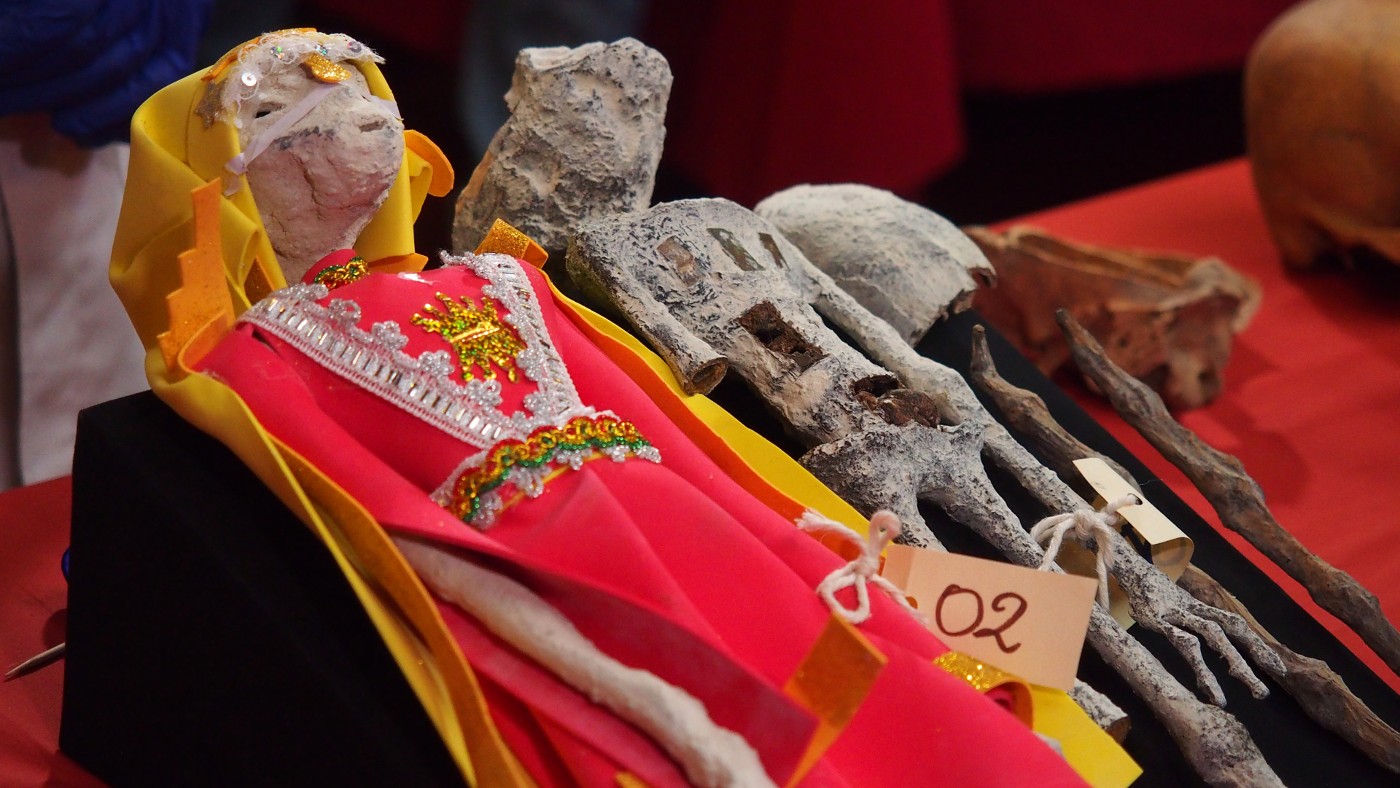The mystery of the ‘Mad Gasser’ of Mattoon
Investigators have puzzled over spate of unexplained illness in US town for almost 80 years

A decades-old mystery began on 1 September 1944 when a mother and her three-year-old daughter suddenly fell ill in the central Illinois town of Mattoon.
Aline Kearney was in bed alongside her daughter Dorothy when she smelled what she later described as a “sickening, sweet odour”. The mother-of-two told police and reporters that “the odour grew stronger and I began to feel a paralysis of my legs and lower body”.
Kearney’s cries for help alerted her sister, who had been keeping her company while “Kearney’s husband was out on his taxi route”, said The Washington Post. The sister “raced to the open bedroom window”, and “a neighbour called the police, but there were no signs of a prowler”, the paper continued. But when Kearney’s husband returned home later that night, he “spotted a suspicious figure standing at their window”, clad in dark clothing and “a tight-fitting cap”.
The Week
Escape your echo chamber. Get the facts behind the news, plus analysis from multiple perspectives.

Sign up for The Week's Free Newsletters
From our morning news briefing to a weekly Good News Newsletter, get the best of The Week delivered directly to your inbox.
From our morning news briefing to a weekly Good News Newsletter, get the best of The Week delivered directly to your inbox.
The mother and daughter quickly recovered, but local media reports the following day described them as the “first victims” of an unidentified attacker. A local man, sheet-metal worker Urban Raef, then came forward claiming that he and his wife had become unwell during the night before the alleged attack, after “fumes poured in” through their open bedroom window.
Panic and street patrols
Within days, a string of similar cases had been reported. Around 35 people from the town’s then population of around 16,000 claimed to have become unwell after smelling an odd aroma, according to Historic Mysteries.
The affected people reported “symptoms of exposure to poison gas – nausea, vomiting, weakness leading to near paralysis, light headedness, even spitting up blood”, said the Illinois Times. And “all the victims reported a ‘sweet cheap perfume odour’ permeating their homes” before the symptoms began.
Hysteria soon set in. “Roving bands of townspeople armed with shotguns and pistols stalked the community at night” searching for the perpetrator of the alleged attacks, who was quickly dubbed the “Mad Gasser” of Mattoon, said The Washington Post. Women “carried bats and clubs” with them whenever they left their homes, and “residents began staying with friends rather than sleeping alone”.
A free daily email with the biggest news stories of the day – and the best features from TheWeek.com
But despite following up a string of leads, “the police were stumped”, said Historic Mysteries. Even the FBI “could not come to a concrete decision about what was happening in Mattoon”.
On 12 September, the town’s chief of police released a statement saying that the smell had been caused by gas accidentally released by a local diesel engine factory being wafted into people’s homes as a result of “wind shifts”, said Iliinois Library. Mattoon had simply fallen victim to mass hysteria, police insisted.
The State’s Attorney William Kidwell said the hysteria had been fuelled by a reporter “with a vivid imagination” from the local Journal Gazette newspaper.
‘Mad Gasser’ unmasked?
The events in Mattoon in 1944 have “long been cited in college psychology classes as a perfect example of mass hysteria”, said the Illinois Times.
With the supposed attacks taking place during the Second World War, “when so many men were off fighting and so many women left alone, the gassings have been explained away as a product of paranoia, panic and delirium”, the paper continued.
But not everyone is convinced by that explanation.
In a book published in 2003, local high-school science teacher Scott Maruna questioned the mass hysteria theory and gave “credence to many who came forward” with accounts of attacks, said the Illinois Times.
Maruna suggested that the alleged Mad Gasser might have been “town genius” Farley Llewellyn, a chemistry student and outcast who “drank too much” and who “kept a secret laboratory” and was known to have “experimented with various chemicals”, the paper reported.
Maruna wrote that “in a fit brought on by mental instability and years of pent-up rage against a town that would not and could not accept him, Farley tinkered and toyed with various organic solvents in an attempt to create a suitable weapon”.
But many sociologists and armchair detectives who have “pored over newspaper accounts and police records” are “still sceptical”, said Historic Mysteries. And with no new leads likely to emerge, there may never be a conclusive answer to the Mad Gasser mystery.
For more unexpected news stories, sign up to the weekly Tall Tales newsletter
Julia O'Driscoll is the engagement editor. She covers UK and world news, as well as writing lifestyle and travel features. She regularly appears on “The Week Unwrapped” podcast, and hosted The Week's short-form documentary podcast, “The Overview”. Julia was previously the content and social media editor at sustainability consultancy Eco-Age, where she interviewed prominent voices in sustainable fashion and climate movements. She has a master's in liberal arts from Bristol University, and spent a year studying at Charles University in Prague.
-
 Could smaller cars bring down vehicle prices?
Could smaller cars bring down vehicle prices?Today’s Big Question Trump seems to think so, but experts aren’t so sure
-
 2025’s most notable new albums
2025’s most notable new albumsThe Week Recommends These were some of the finest releases of the past year
-
 Trump aims to take down ‘global mothership’ of climate science
Trump aims to take down ‘global mothership’ of climate scienceIN THE SPOTLIGHT By moving to dismantle Colorado’s National Center for Atmospheric Research, the White House says it is targeting ‘climate alarmism’
-
 Zoos offer cockroach naming and hippo poo candles
Zoos offer cockroach naming and hippo poo candlesTall Tales And other stories from the stranger side of life
-
 NHS tells Scots to walk like penguins
NHS tells Scots to walk like penguinsTall Tales Walk like penguins in the snow, says NHS
-
 Experts discover why dogs wag their tails
Experts discover why dogs wag their tailsTall Tales And other stories from the stranger side of life
-
 Peruvian 'aliens' aren't really aliens
Peruvian 'aliens' aren't really aliensTall Tales And other stories from stranger side of life
-
 Woman accidentally puts nan in washing machine
Woman accidentally puts nan in washing machineTall Tales And other stories from the stranger side of life
-
 Couple sues after ‘farting dog’ ruins flight
Couple sues after ‘farting dog’ ruins flightfeature And other stories from the stranger side of life
-
 Experts suggest the real-life Dracula was vegan
Experts suggest the real-life Dracula was veganfeature And other stories from the stranger side of life
-
 Pedants forgive Waterstones over apostrophe
Pedants forgive Waterstones over apostrophefeature And other stories from the stranger side of life